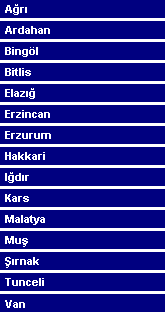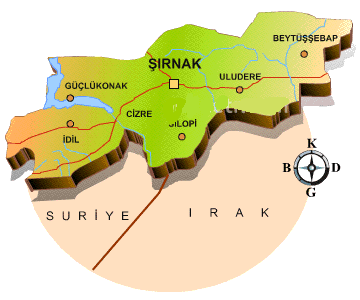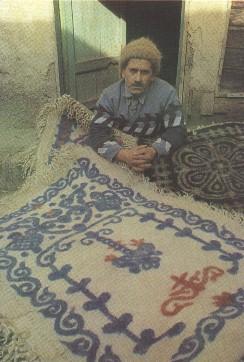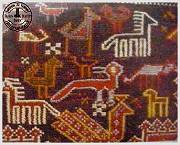| Sirnak... |
|
Surrounded by high mountains, is Sirnak a new province, which was once a town of Hakkari province. The Habur border gate
with Iraq is here on the road which is one of Türkiye's main links to Middle Eastern countries. Sirnak, on the north face
of Mount Cudi (2,114 M), derives its name from the Moslem belief that Noah's Ark landed on this holy mountain: Sir - City,
Nak - Noah. Forty - five kilometers from Sirnak, Cizre is the supposed location of his tomb. Siirt was an especially
eminent city at the time of tne Abbasid Caliphate. Among the city's monuments, be sure to visit the 12th century
Seljuk Ulu Mosque and the 13th century Asakir Carsi Mosque. At Aydinlar, only 6 km from Siirt, the ibranim Hakki
Mausoleum Complex and nearby private Ibrahim Hakki Astronomical Museum are worthy of close examination. Siirt produces fine
and large pistachio nuts and is known as well for its excellent goat-hair blankets and kilims. Sirnak, on the north face of
Mount Cudi (2,114 meters)derives its name from the Moslem belief that Noah's Ark lended an this holy mountain: Sir-City,
Nak-Noah. Fortyfive kilometers from Sirnak, Cizre is the supposed location of his tomb. Cavustepe, 35km from Van on the
Hakkari road, is an important Urartian citadel. Excavated in 1970, today you can see temples, a palace, a sacrificial
altar and inscriptions. On the pastoral, winding road to Hakkari, the Zernek Dam Lake offers itself as a resting spot
on the way to Hosap, 60 km from Van, where a 17th century fairytale castle rises above a small hill. Although
the inside is badly damaged, the exterior walls, crenellations and turrets are well-preserved. Among the interesting
geographical features around Lake Van, the Muradiye Waterfalls, 88 km north of Van, with a peaceful tea garden and
restaurants, and Gahnispi-Beyaz Cesme Falls, 60km south of Van, are worth visiting. The road to remote Hakkari, 203 km
southeast of Van, takes you through Cilo-Sat Mountains and the Zap Valley. A medieval fortress some of Türkiye's most
magnificent scenery dominates the city, which is at an altitude of 1,700 meters. This piece of land of 779,000 square
kilometers, located between Europe and Asia, serves as a bridge between three continents, and is surrounded on therr sides
by seas with substantially different characteristics. A large variety of climatic zones co-exist due to its topography. It ,
might even be argued that Anatolia is unique in the world for the great number and variety of climatic zones in proportion
to its area.
|
|
|
|

|


 486...
486...
 73...
73...
 354,061...
354,061...
 7,172...
7,172...
 43 E 45 - 37 N 34...
43 E 45 - 37 N 34...





